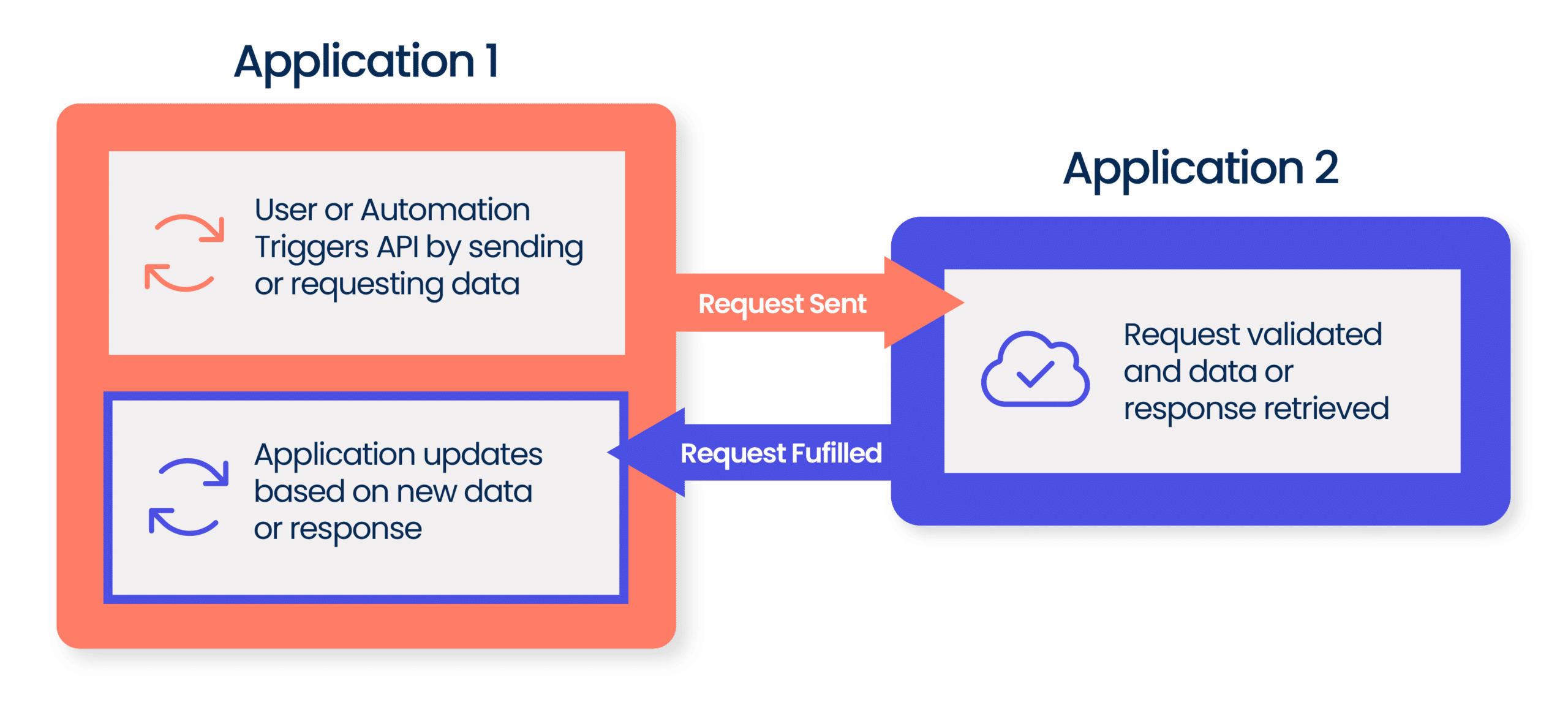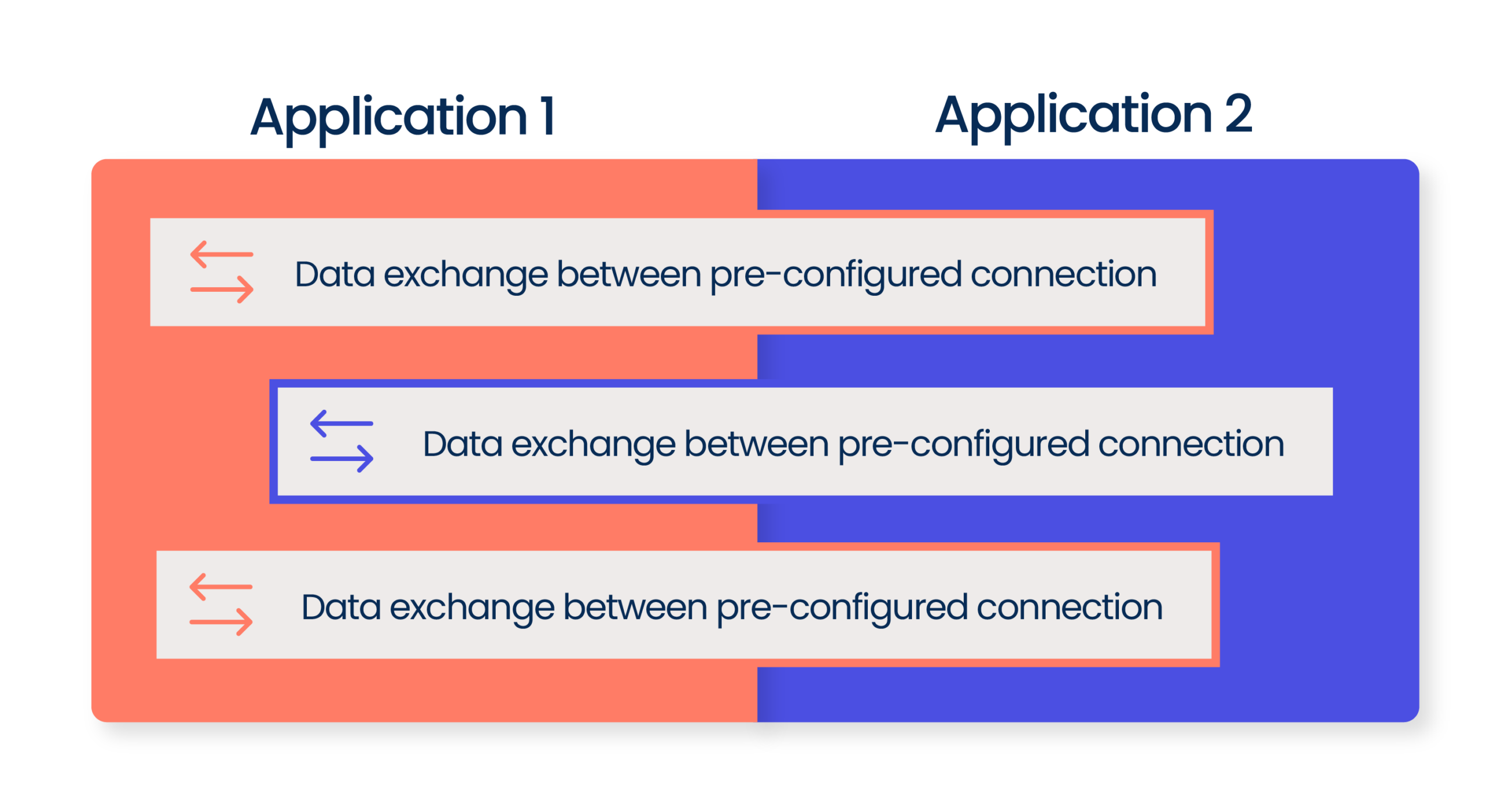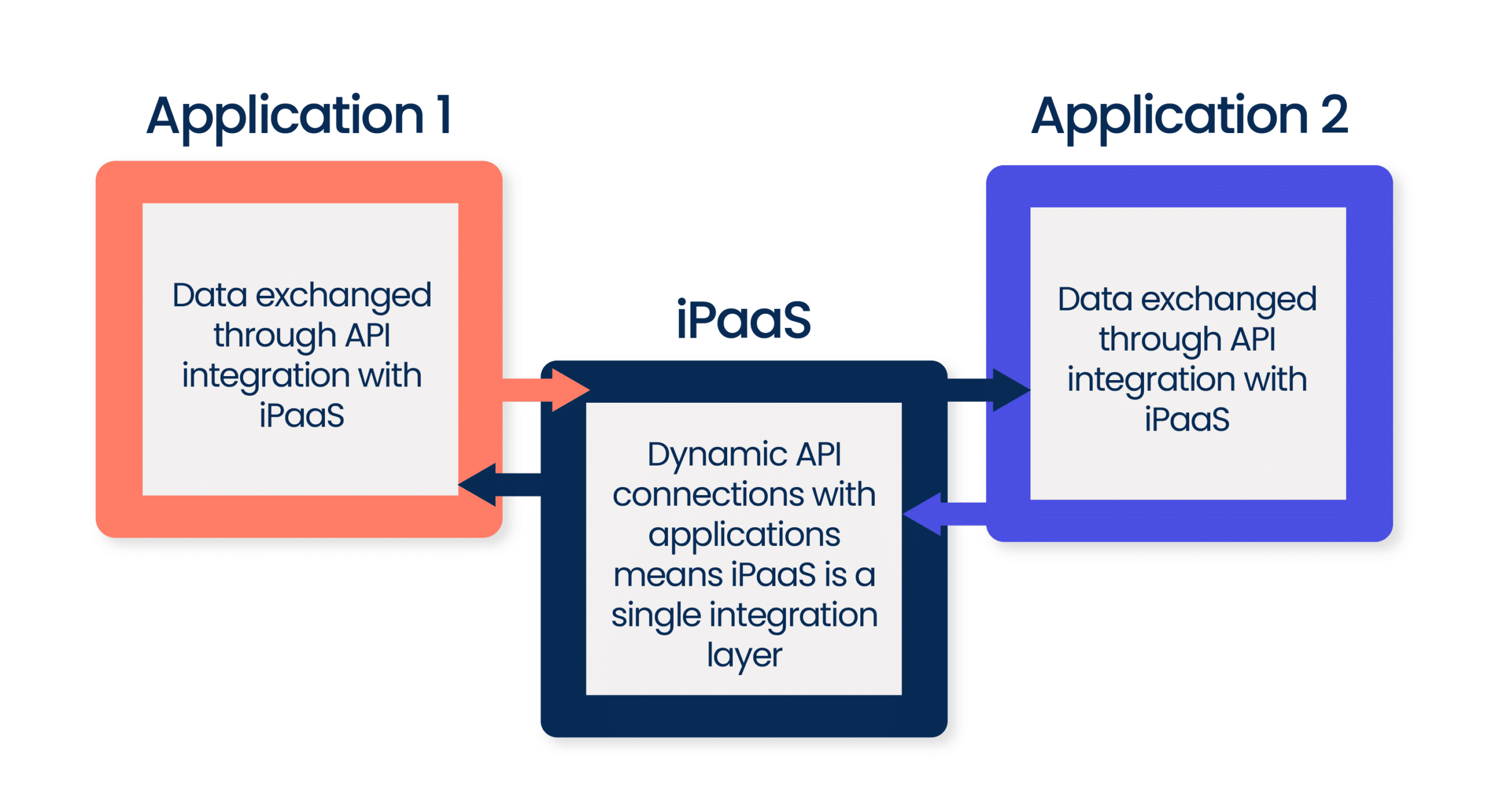As enterprise software becomes increasingly cloud-based, systems are most effective when connected to your other applications through API integration. These integrations allow data to be shared across multiple systems simultaneously, enabling workflow automation and real-time data no matter which system a user is accessing.
Pervasive connectivity across business systems through API integration technologies is no longer a “nice to have.” An enterprise that delays or opts not to integrate through API technology leaves significant efficiency, optimizations, and deeper data analysis on the table.
What Is API Integration?
An API (application programming interface) is an external adapter for a piece of software that allows it to share data and commands back and forth with other software. An API translates the software’s internal language into data that can be understood by other APIs and receives usable data from other applications.
API integration is the bridge between two APIs that translates each system’s data back and forth. It must be created, programmed, and published, and that’s where API integration technologies play a role.
How do API Integrations work?
As an interface, APIs allows for data to move between software, but it can be highly dependent on how each software’s API has been built. API integrations are deceptively simple: A call is generated from one application and sent to a second application’s API endpoint. The recipient generates a response, and returns the requested data to the sender.
- API Endpoint: An API endpoint is a URL that can be used to send requests to an application’s API. This is the “inbox” for an application to make a data request.
- API Security: Modern business APIs will have a built-in security layer with unique API keys or identity authentication through a username and password. This helps protect from unauthorized access or attacks aimed at the data and infrastructure.
- API Request: The way most people are familiar with APIs, API requests are what define the data exchange being requested and the action that will be taken by an application. The most common for API requests are:
GETto fetch data.POSTorPUTto change or add new data to data fields.DELETEto remove data from data fields.
The documentation for an API will provide information on how requests should be structured in order to retrieve the data needed for a request.
- API Response: The answer to an API request. This will contain a list of data fields and their values, which developers can then use to execute the desired tasks the data is intended for, such as transferring from one application to another, updating a dashboard, or executing an automation.
API Integration Methods
APIs must be integrated with one another for systems to send and receive data with each other. Integration can be achieved in one of three ways.
1. Custom-coded “point-to-point” integrations
 For years, the only way to connect two APIs was to have a programmer write the code from scratch. Custom code can be an effective way to connect APIs, when done by a skilled developer. But it’s time-consuming and requires deep technical knowledge — an expensive combination.
For years, the only way to connect two APIs was to have a programmer write the code from scratch. Custom code can be an effective way to connect APIs, when done by a skilled developer. But it’s time-consuming and requires deep technical knowledge — an expensive combination.
When done by a less-experienced developer, developing custom code can create slow, unstable, or even unsecure integrations between APIs. But given the recent proliferation of API integration technologies, creating custom code is no longer necessary.
2. Pre-built application connectors
 Pre-built connectors are available for many programs. This API integration technology is no-code, meaning the person implementing it doesn’t need to do any programming. The code is pre-written, tested, and ready for use. Connector apps are so common you may not even realize you are using them. For example, if you have your Outlook calendar synced to Zoom, you’re using a connector app.
Pre-built connectors are available for many programs. This API integration technology is no-code, meaning the person implementing it doesn’t need to do any programming. The code is pre-written, tested, and ready for use. Connector apps are so common you may not even realize you are using them. For example, if you have your Outlook calendar synced to Zoom, you’re using a connector app.
Although connector apps are easy to use, they’re functionally limited. They only make a single, isolated connection between two programs. They also require manual activation, which results in inefficient implementation and lost opportunities for understanding your business data.
3. Integrated platform as a service
 “Integration platform as a service”, shortened as iPaaS, refers to a cloud-based platform with hundreds of pre-built API integrations.
“Integration platform as a service”, shortened as iPaaS, refers to a cloud-based platform with hundreds of pre-built API integrations.
An integration platform approach takes the concept of connector apps and improves upon it significantly. While both iPaaS and connector app technologies are no-code, iPaaS brings all these connections into a single system. Having your integrations in one place allows you to create a web of connections between all business software.
Ways to Use an API Integration
API integrations can be incredibly useful for streamlining workflows, enhancing functionality, and connecting different software systems. There are many ways an API integration can benefit your business, but here are 5 of the most common use cases.
1. Automate Tasks and Workflows
APIs can automate repetitive tasks, saving time and reducing human error. For example, integrating a CRM system, APIs can automatically update customer information or send follow-up emails based on triggers, such as a new customer registration or a completed purchase.
2. Enhance Data Sharing and Synchronization
APIs enable seamless data sharing between different systems. For instance, an API integration between an e-commerce platform and an inventory management system ensures that stock levels are always up-to-date across all sales channels, preventing overselling or stockouts.
3. Extend Functionality of Existing Applications
APIs can add new features or enhance existing functionalities of an application. For example, integrating a payment gateway API with an online store allows for secure and efficient payment processing, adding value to the ecommerce customer experience without building a custom solution from scratch.
4. Improve Reporting and Analytics
APIs can pull data from various sources into a central analytics tool, providing a comprehensive view of business performance. For instance, integrating APIs from different marketing platforms (like Google Analytics, Facebook Ads, etc.) into a business intelligence tool can create unified reports that help in making informed decisions.
5. Enable Real-Time Data Access and Updates
APIs facilitate real-time data access and updates, crucial for applications that require up-to-the-minute information. For example, fintech’s integrating with a finance API can provide users with current stock prices is always accurate and up-to-date.
Benefits of iPaaS for API Integration Strategy
iPaaS systems are easy to use without specialized technical knowledge, improving business operations through integration. Non-technical stakeholders can build self-serve integrations within a visual web interface rather than requiring text-based coding. By using a library of pre-built connectors, IT resources can be freed up and put to work on higher-value projects.
The web of integrations creates a whole connectivity ecosystem. When data is updated in one system, it is automatically shared with other relevant software. This can be useful for automating workflows, generating reports with up-to-the-second data, and ensuring that no data is transferred or recorded incorrectly due to human error.
With all your API integrations in one platform, your application data is also in one place, creating a data hub for your organization. Data can be tracked through custom dashboards, allowing you to prioritize which information to follow. It also enables you to search for information across your entire suite of software programs with a single query. When all your API data is in one place, it’s easier to access and analyze.
The Boomi Enterprise Platform has a library of hundreds of API integrations. You can integrate all your software programs and start realizing the benefits of a fully connected software ecosystem in days or even hours.
Staying competitive in today’s fast-changing market and outpacing the competition requires accurate data delivered more quickly than ever. We cover why data accuracy, speed, and quality are the foundation of success in “API Management in the Age of AI.”

 English
English 日本語
日本語